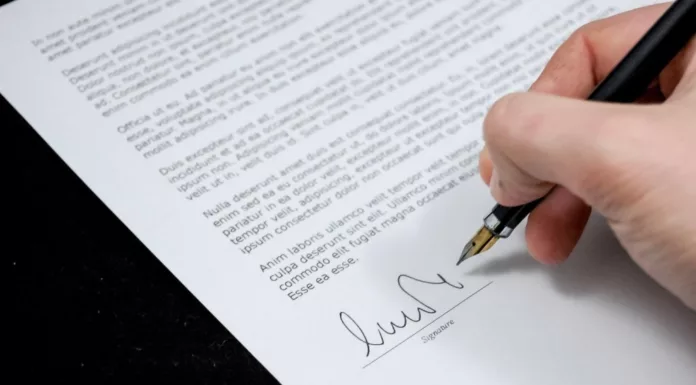If you are involved in an accident, resolving the injury claim can be difficult. However, a good demand letter is a key to achieving a fair settlement. When insurance adjusters evaluate a claim, they look closely into the details of an accident.
A demand letter accurately accounts for all the details of an accident and the damages caused. It is considered an attempt to resolve the accident claim before filing a civil lawsuit.
What is a Demand Letter?
A demand letter is a written claim for compensation. Writing an effective demand letter is one of the best ways to account for all the details of an accident. With the help of an experienced car accident lawyer, you can draft a demand letter that gives you the best chance of a favorable outcome.
Your demand letter should detail the following:
- Description of the accident including important details such as speeding or intoxicated drivers
- Why the other party involved in the accident was at fault
- Your total damages
- Your compensation demands
How to Write an Effective Demand Letter
As you write a demand letter, remember your goals. Include all the facts of the accident and supporting documents. Here are some tips to ensure your demand letter is effective.
1. Itemize and Organize Your Expenses
An effective demand letter should include your expenses. Itemize and organize your expenses and enclose all out-of-pocket expenses you incurred as a result of the accident. Most insurance adjusters will base their initial offer on the expenses that you have outlined.
These expenses may include prescriptions, medical bills, loss of income, property damage, and car repair bills, among others. Each case is unique, and you may incur unique damages depending on your circumstances.
Make sure you gather all your medical reports, bills, and proof of lost wages to show your expenses and how much you spent covering the damages you suffered due to the accident.
2. Describe the Facts
Your demand letter should give a factual explanation of the accident. Assume the reader has no details about the car accident or other activities following the crash.
Include the time of the accident and how it happened. Ensure you include details of your activities at the time of the accident and how the other driver approached your vehicle. Explain all the circumstances of the accident as clearly as you can and include any information you may have about the at-fault driver.
3. Share Your Point of View
Your demand letter should include details such as when you started experiencing pain or discomfort. For instance, if you have any memory of your head hitting the dashboard or the airbags hitting your chest, document it in your demand letter.
Medical reports will support your injuries and any treatment you received following the accident. All the details on your demand letter and supporting documents must match.
4. Describe Your Journey to Recovery
Typically, the adjuster will get a picture of everything that happened following the collision from your demand letter. Your demand letter must include your journey to recovery to show the adjuster everything you experienced following the crash.
Include in your demand letter when your treatment started, why you needed treatment, and details of all the treatments you received. To maximize its effectiveness, include the entire scope of your treatment in the demand letter.
5. Request a Settlement Amount
Once you have detailed the events that occurred before, during, and after the accident, request a reasonable settlement amount. This amount should cover your financial losses including medical bills, all expenses you paid out of pocket, lost wages, and non-economic damages such as emotional distress or pain and suffering.
Do not quote a settlement amount that is too high, as the adjuster might feel you are overreaching. Request a realistic amount that will cover all your current and future expenses.
6. Review Your Letter
Make sure you review your demand letter for accuracy. The writing should be clear and factual. An overly emotional representation can negatively affect the effectiveness of your demand letter.
Consult an experienced car accident attorney to ensure your demand letter includes crucial details that will support your claim and help you get a fair settlement. An experienced lawyer will also help you remove non-important details that will not affect the adjuster.
Tips for Writing an Effective Demand Letter
A demand letter is an important first step to settling your claim. It is important to make sure that your demand letter is effective, and you can do so by:
- Using a firm, but polite tone
- Staying objective and detailing facts only
- Describing important details and related damages in a tone that is not overly emotional
- Not exaggerating your injuries
- Not asking for more than you deserve
- Including a deadline for the response
- Including hard copies of all claims
Why Should You Write a Demand Letter?
A demand letter presents the facts of the collision, and any expenses incurred such as medical costs, lost wages, property damage, or car repair costs.
It proposes the amount you are willing to accept as compensation to recover the damages and resolve the case. Your demand letter also shows who is at fault.
What Should You Do After Sending a Demand Letter?
Insurance companies can take a long to reply to your demand letter. It can take weeks or even months to receive a reply so you can begin negotiating a settlement. However, insurance companies are highly motivated to settle as efficiently as possible.
You can explore several options if you have not received a reply to your demand letter. Ensure that your letter includes all the necessary documentation to support your claim. These documents help the insurance adjuster determine your case and decide whether your demand includes a fair settlement amount.
Talk to a lawyer if the insurance company refuses to make a fair settlement. Remember, each state has a statute of limitations which is the deadline to file a claim. If the insurance company does not respond in time, you may miss the chance to get fair compensation or file a lawsuit.
Possible Responses to a Demand Letter
Insurance companies are businesses, and settling claims eats into their profits, so you may not always get a fair response to your demand letter. Some insurance companies respond to your demand letter with the following:
- Acceptance: The insurance company may accept your demands and move to compensate you and settle your claim.
- Counteroffer: The insurance company may offer you an amount less than that indicated in your demand letter.
- Denial: The insurance company may refuse to pay any damages.
- No Response: The insurance company may not respond in hopes that you will drop the case. In this case, you should contact an attorney.
Never sign a counteroffer until you have talked to a lawyer and your injuries have healed. You may accept an offer and suffer complications that lead to more medical bills. If the insurance company does not respond to your demand letter, speak to an attorney to start filing a lawsuit.
Summary
While you can draft your own demand letter, we recommend talking to a lawyer. An attorney can help you write an effective demand letter that will get a prompt response. They can also answer all your questions and help you strategize a plan for fair compensation.
Most car accident attorneys charge a contingency fee, so you will not have to pay any money out of your own pocket to get representation.
A contingency fee also ensures that your lawyer will work hard to maximize your compensation to ensure they get fair payment. Get in touch with an attorney to learn more about how to write an effective demand letter.


